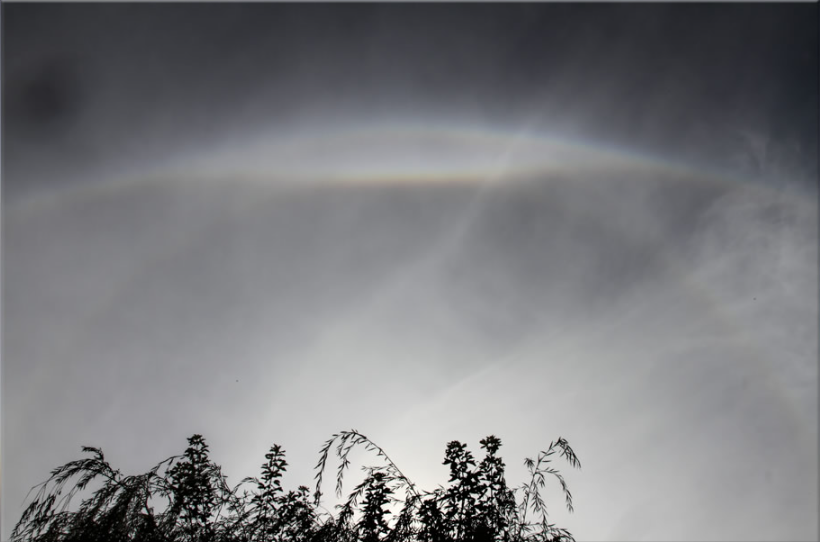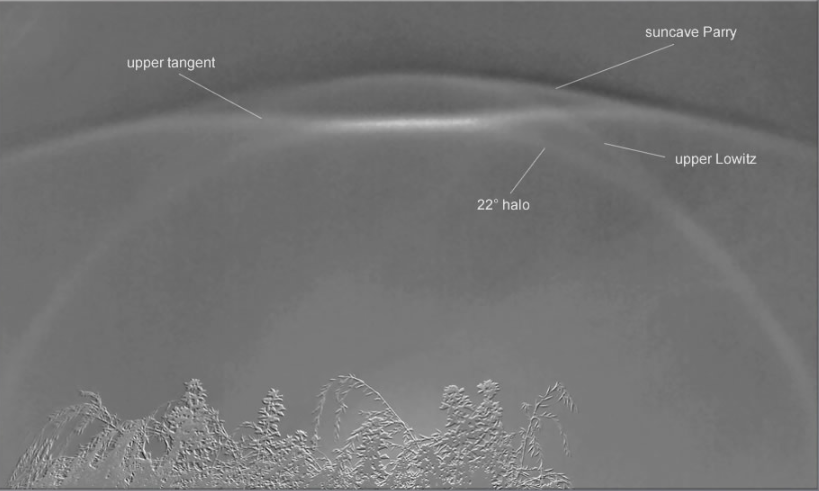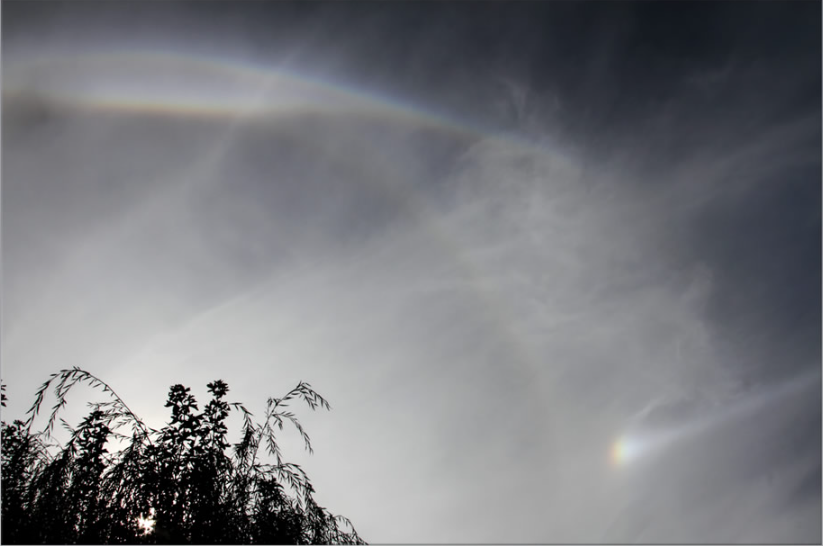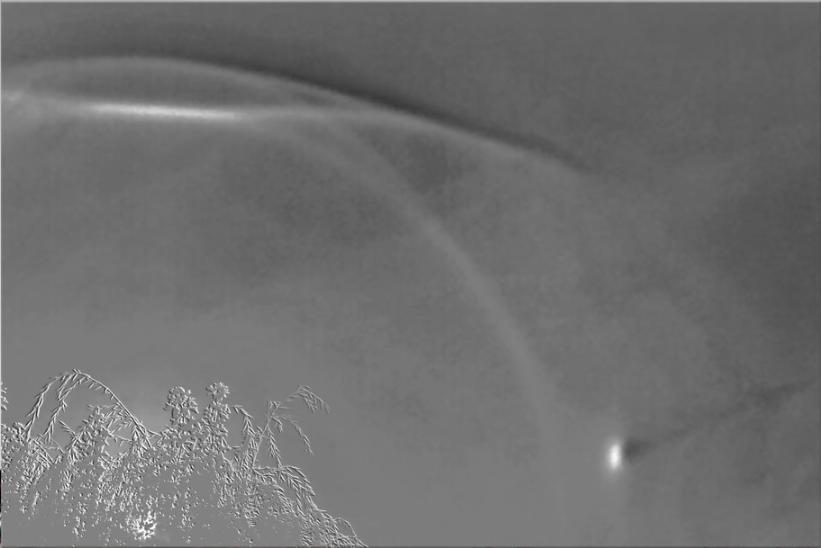Lowitz Arcs, France- OPOD
Lowitz Arcs: A Phenomenon in the Skies of France
Have you ever looked up at the sky and been captivated by the array of optical phenomena on display? One such phenomenon that often goes unnoticed is the Lowitz arc. In this article, we will delve into the details of Lowitz arcs, with a particular focus on sightings in France.
What are Lowitz Arcs?
Lowitz arcs are a type of atmospheric optical phenomenon that occur when light is refracted and reflected by ice crystals in the atmosphere. They are named after their discoverer, Johann Tobias Lowitz, who first observed them in 1790. These arcs appear as curved bands of light that are tangent to the 22° halo, a circular halo around the Sun or Moon.
The Upper Lowitz Arcs
One variation of the Lowitz arc is the upper Lowitz arc. These arcs can be seen when there is a strong Parry arc above an upper tangent arc. The upper Lowitz arc starts at the 10 and 2 o'clock positions, where it is tangent to the 22° halo. From there, it curves upwards, crosses the upper tangent arc, and eventually becomes tangent to the suncave Parry.
The Search for Lowitz Arcs
Interestingly, Lowitz arcs went unnoticed for nearly 200 years after their initial discovery. This can be attributed to early searches focusing on the region between the 22° parhelia (bright spots on either side of the Sun) and the 22° halo. The region where most Lowitz arcs are found was overlooked. It was only later that researchers realized the significance of this area.
Challenges in Spotting Lowitz Arcs
The scarcity of sightings of "parhelion Lowitz" can be attributed to the specific conditions required for their formation. Many Lowitz arcs arise from "Parry-Lowitz columns" that rotate around an axis perpendicular to the crystal's long axis. This orientation, known as the traditional Lowitz orientation, has a restricted range of angles, making it more challenging to spot these arcs.
Enhanced Views and Colour Subtraction
To get a clearer view of Lowitz arcs, researchers have employed various techniques. One such technique is a colour subtraction process that helps highlight the arc's colors and make it more distinguishable. By subtracting the colors of the background sky, the Lowitz arc stands out and becomes more apparent.
The Strength of Lowitz Arcs
Lowitz arcs are known to be strongest at the top of the 22° halo. However, they tend to be weak or even non-existent in the traditional search area around the sundog, another atmospheric optical phenomenon. This reinforces the importance of looking beyond the expected locations when searching for these elusive arcs.
Conclusion
The exploration of atmospheric optics continues to unveil fascinating phenomena that grace our skies. Lowitz arcs, with their curved bands of light tangent to the 22° halo, are a captivating example. While initially overlooked, these arcs have become a subject of intrigue and fascination for researchers and enthusiasts alike. The search for Lowitz arcs in France has shed light on their occurrence and characteristics, highlighting the need for careful observation and exploration of less-explored regions in the sky. So, the next time you gaze up at the heavens, keep an eye out for the subtle beauty of Lowitz arcs, a testament to the wonder and complexity of our atmosphere.

Upper Lowitz Arcs
A display at Dun-sur-Grandry, France imaged by Hans Stocker.
Always search hard for an upper Lowitz arc when - as here - there is a strong Parry above an upper tangent arc.
The Lowitz is tangent to the 22° halo at 10 and 2 o' clock. It then curves away upwards, crosses the upper tangent arc and becomes tangent to the suncave Parry.
This is the region to search for most Lowitz arcs. A factor why it went unrecorded for some 200 years after Lowitz saw it in 1790 was that early searches concentrated on the region between 22° parhelia and the 22° halo.
Scroll down for an enhanced view of the latter region in this display. There are maybe traces of an arc there - but it is hard to see.
The dearth of 'parhelion Lowitz' sightings is likely because many Lowitz arcs arise from 'Parry-Lowitz' columns' that rock about an axis perpendicular to the crystal long axis. This is the traditional Lowitz orientation but with a restricted range of angles.
Images ©Hans Stocker, shown with permission

A colour subtraction process clearly shows the coloured Lowitz arc.

The Lowitz is strongest at the top of the 22° halo. It is weak or even non-existent at the traditional search area around the sundog.

Note: this article has been automatically converted from the old site and may not appear as intended. You can find the original article here.
Reference Atmospheric Optics
If you use any of the definitions, information, or data presented on Atmospheric Optics, please copy the link or reference below to properly credit us as the reference source. Thank you!
-
<a href="https://atoptics.co.uk/blog/lowitz-arcs-france-opod/">Lowitz Arcs, France- OPOD</a>
-
"Lowitz Arcs, France- OPOD". Atmospheric Optics. Accessed on November 21, 2024. https://atoptics.co.uk/blog/lowitz-arcs-france-opod/.
-
"Lowitz Arcs, France- OPOD". Atmospheric Optics, https://atoptics.co.uk/blog/lowitz-arcs-france-opod/. Accessed 21 November, 2024
-
Lowitz Arcs, France- OPOD. Atmospheric Optics. Retrieved from https://atoptics.co.uk/blog/lowitz-arcs-france-opod/.